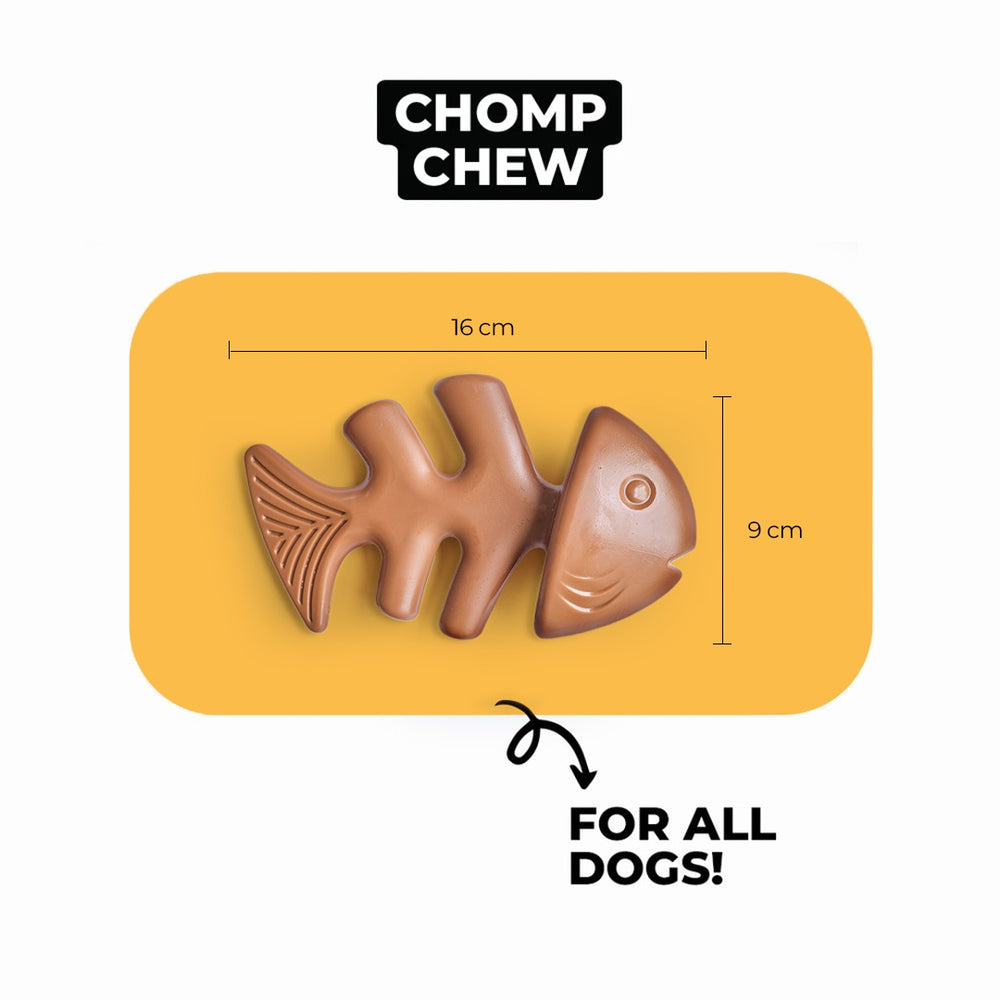Comfort Canine Box
Does your dog seem distressed when you leave or show signs of low self-esteem?
Introducing the "Comfort Canine Box" for your anxious pup!
This box is specially curated for dogs needing a little extra soothing and is the most effective to enrich your stressed puppy’s life.
Inside, you'll find two toys perfect for giving your dog the reassurance and comfort they need.
- Chew toy: Made with nylon, it is an extremely durable toy, picked to allow your dogs to let out their aggression while massaging their gums and maintaining their dental hygiene. This satisfies their instinct to chew while enriching them mentally and physically, leaving them peaceful, reassured, and happy.
- Lick mat: Licking is a self-soothing mechanism for dogs, it releases endorphins to calm them, making lick mats the best toy to comfort your dogs by giving them both a challenge and a treat. Introducing lick mats in stressful situations will help desensitise and positively counter-condition, making playtime a positive experience. Just spread your treat on the ridges of the food-grade silicone mat and wait for it to work its magic by turning that anxiety into happiness.
These toys are ideal for dogs who experience isolation distress, fearfulness, low self-esteem or separation anxiety.
You may also like
What’s in the Box?
- Non Toxic
- BPA Free
- Phthalate Free
- Chicken Flavoured
- Introduction: Introduce the chew toy to your dog excitingly. Let them sniff and explore it.
- Supervision: Supervise your dog initially to ensure safe play and avoid indigestion of small parts.
- Rotate Toys: Switch it up with other toys to prevent boredom and keep your dog engaged and entertained.
- Monitor Wear and Tear: Check the chew toy regularly for wear and tear, and replace it if damaged.
- Clean Regularly: Clean the toy regularly to remove dirt, saliva, and any residues.
- Enjoyment and Safety: Put your dog's enjoyment and safety first. If they get frustrated or the dispenser gets damaged, stop using it.
Size - 20.5 x 10.5 x 4 cm
Weight - 195g
100% Nylon
- Non-toxic
- BPA Free
- Dishwasher Safe
- Freezer Safer
- Prepare the Lick Mat: Spread a thin layer of your dog's favourite soft treat, like peanut butter or yoghurt, on the lick mat.
- Encourage Licking: Introduce your dog to the mat with a simple command such as "lick" to start the activity.
- Start Gradually: Use a small amount of treats initially, especially if your dog is new to lick mats or has a sensitive stomach, and gradually increase the amount.
- Supervise: Always monitor your dog to ensure they are licking and not chewing the mat.
- Add Variety: Regularly clean the lick mat to remove leftovers. It’s dishwasher safe, or you can wash it by hand with warm water and soap.
- Clean Regularly: Wash regularly by hand or in the dishwasher to remove any residue.
- Limit Time Sessions: Monitor your dog’s licking time to prevent overeating and digestive discomfort.
Size - 15 x 15 x 0.8 cm
Weight - 110g
Food grade silicone
Testimonials
Understand your pet's behaviour better
Isolation distress: Characterised by persisting distress such as excessive barking or howling, pacing, restlessness, tearing or scratching objects, loss of appetite etc when left alone in general.
Fearfulness: Characterised by behaviours like shaking, hiding, avoiding, excessive barking, heavy breathing, and aggressive or defensive actions.
Low self-esteem: Characterised by hiding and avoidance behaviour, fearfulness, hypervigilance, tearing furniture, anxious/aggressive behaviour and reluctance to come near people.
Separation anxiety: Characterised by dogs showing signs of distress such as excessive barking or howling, pacing, restlessness, tearing or scratching objects, loss of appetite etc when separated from their pet parents.
With our comfort box, your doggy can find peace and comfort whenever they need it most.




























